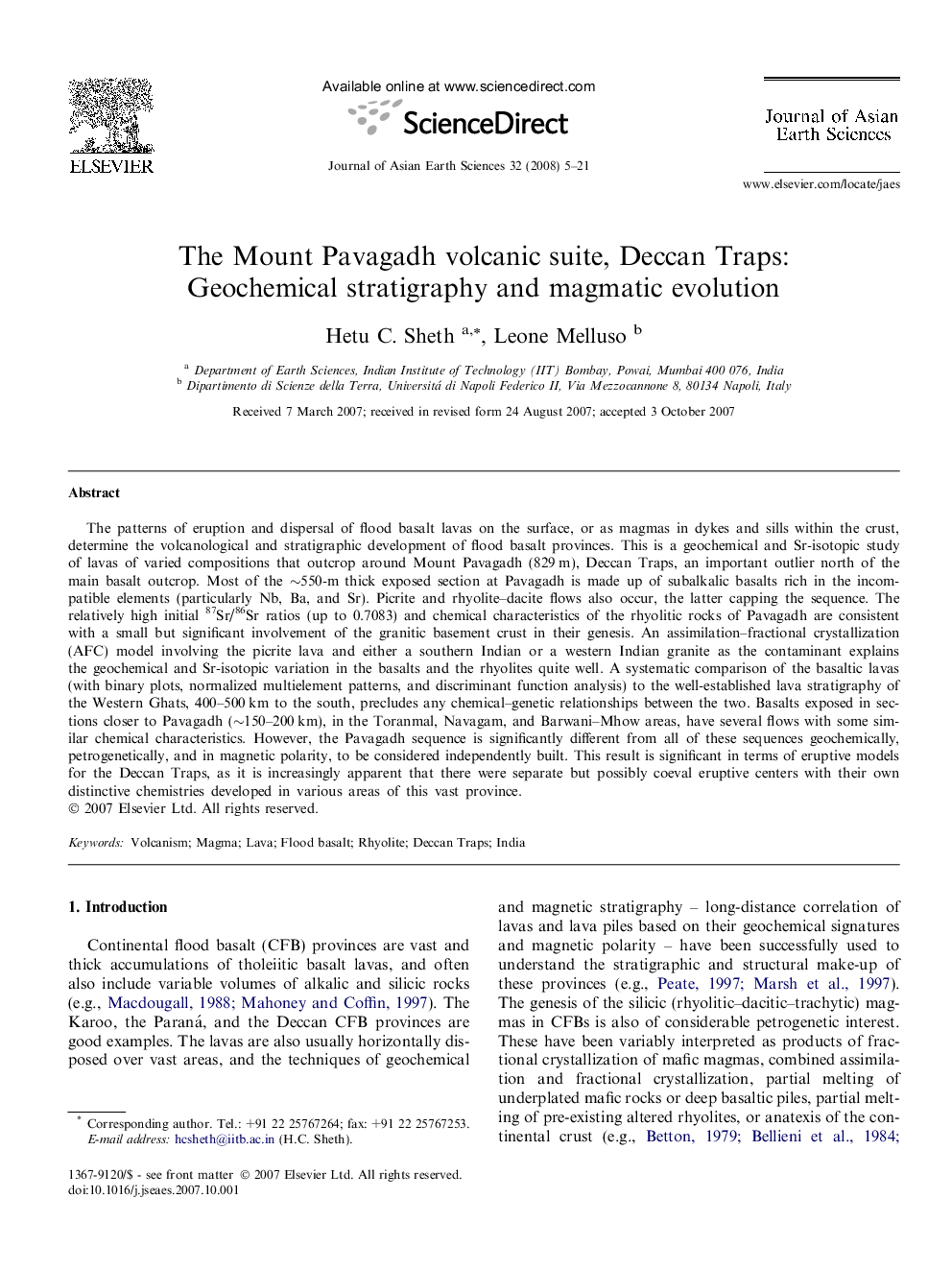| کد مقاله | کد نشریه | سال انتشار | مقاله انگلیسی | نسخه تمام متن |
|---|---|---|---|---|
| 4732416 | 1356863 | 2008 | 17 صفحه PDF | دانلود رایگان |

The patterns of eruption and dispersal of flood basalt lavas on the surface, or as magmas in dykes and sills within the crust, determine the volcanological and stratigraphic development of flood basalt provinces. This is a geochemical and Sr-isotopic study of lavas of varied compositions that outcrop around Mount Pavagadh (829 m), Deccan Traps, an important outlier north of the main basalt outcrop. Most of the ∼550-m thick exposed section at Pavagadh is made up of subalkalic basalts rich in the incompatible elements (particularly Nb, Ba, and Sr). Picrite and rhyolite–dacite flows also occur, the latter capping the sequence. The relatively high initial 87Sr/86Sr ratios (up to 0.7083) and chemical characteristics of the rhyolitic rocks of Pavagadh are consistent with a small but significant involvement of the granitic basement crust in their genesis. An assimilation–fractional crystallization (AFC) model involving the picrite lava and either a southern Indian or a western Indian granite as the contaminant explains the geochemical and Sr-isotopic variation in the basalts and the rhyolites quite well. A systematic comparison of the basaltic lavas (with binary plots, normalized multielement patterns, and discriminant function analysis) to the well-established lava stratigraphy of the Western Ghats, 400–500 km to the south, precludes any chemical–genetic relationships between the two. Basalts exposed in sections closer to Pavagadh (∼150–200 km), in the Toranmal, Navagam, and Barwani–Mhow areas, have several flows with some similar chemical characteristics. However, the Pavagadh sequence is significantly different from all of these sequences geochemically, petrogenetically, and in magnetic polarity, to be considered independently built. This result is significant in terms of eruptive models for the Deccan Traps, as it is increasingly apparent that there were separate but possibly coeval eruptive centers with their own distinctive chemistries developed in various areas of this vast province.
Journal: Journal of Asian Earth Sciences - Volume 32, Issue 1, 15 February 2008, Pages 5–21